Understanding the distinctions between the many types of fishing reels can be challenging. spinning reels, baitcasting reels, and spin cast reels are the three main types of fishing reels.
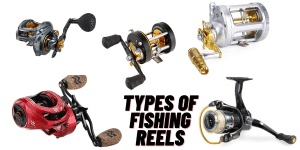
Contents
Different Types Of Fishing Reels in 2024:
Fishing reels are mainly of 3 types, although these are further divided into subcategories, which will be discussed in more detail below in the article.
- Spin casting reel
- Spinning reel
- Baitcasting reel
Depending on the region, target species of fish, money, and skill level, most fishermen will have a preference for a specific style of reel. Below are listed three main types of fishing reels with their advantages and disadvantages.
Spin casting Fishing Reel
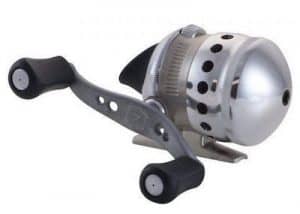
This is one of the easiest reels to cast, making it a favorite among beginners. Many fishermen begin to fish with a spin cast reel and stick with it even after they’ve mastered the sport.
Features: Spincasters have a metal nose cone that conceals all of the reel’s critical components. There’s a button on the rear that toggles the line between free-spool and locked.
Spincast reels include a drag adjustment mechanism. This device effectively allows you to control the amount of resistance a fish encounters when pulling on your line. The “drag” on a spincast is generally on the side of the reel or near the reel handle.
Casting: Casting with a spincast reel is a piece of cake. All you have to do is push the spool control button, swing, and let go.
The line will shoot out to where your rod tip is pointing after you release the button. Simply click the button one more when you’re ready to end the line.
Spinning Reel

Spinning reels are one of the most popular types of reels. You can fish with a spinning reel in several ways because of its efficiency and durability.
Whether you want to jig or throw, the spinning reel provides the versatility you need in a one-and-done fishing reel.
Features: The spinning reel, unlike the spin-cast reel, has an open-face construction with a drag adjustment on the top. It has a metal bail that serves to secure the line and prevent it from unraveling.
Spinning reels are different from other types of reels in that they attach to the rod from below. This provides not only a natural holding position but also a great balance when throwing.
Casting: To throw with a spinning reel, just unhook the bail and press the line against the rod with your index finger to keep it from unspooling. Swing your rod to the side or above after that.
At about halfway through the motion, let go of your index finger. Aim the rod tip where you want the bait to land, and there you have it!
Also Read: Spinning Reel Parts & What To Look For When Buying A Reel
Baitcasting Reel
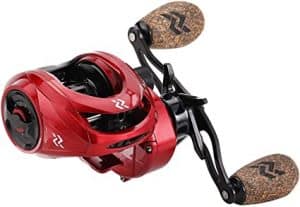
Baitcast reels are mounted on the end of your fishing rod and rely on your thumb to keep the line from unraveling. When casting a baitcasting reel, one of the most important characteristics is that the spool rotates while the line is being released, reducing the possibility of line twisting.
Features: The fact that a baitcaster sits on top of the rod handle is the first thing you’ll notice. It has a semi-enclosed design and considerably more durable construction.
The baitcaster includes two additional components and the drag mechanism, which is located adjacent to the reel handle, allowing for increased performance and customization.
Casting: Because baitcasting reels lack a bail, you must push your thumb on the spool to prevent the line from spooling. If necessary, you may do this while the line is still in flight, allowing for more precise casting.
You simply push a clip to secure the line after the bait has reached the desired location, and you’re ready to go.
Also Read: What are the parts of a baitcasting reel, and how to use them?
Sub Categories:
- Round Baitcasting Reel: This reel has a bigger spool, which allows it to carry more lines. This is the tool to use when you want to cast a line as far as you desire.
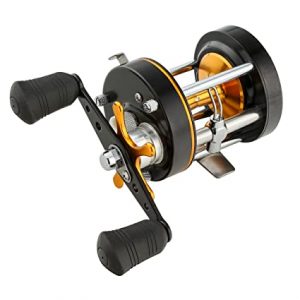
- Low-Profile Baitcasting Reel: Because it is compact, ergonomic, lightweight, and easy to use, this style of baitcasting reel is becoming increasingly popular. With the low-profile reel, you may capture a wide range of gamefish.
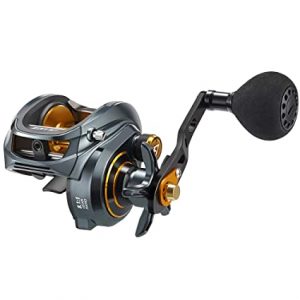
Comparison: Baitcasting vs Spinning Reel: Which One is Better?
Other Types of Fishing Reels
Surfcasting Reel
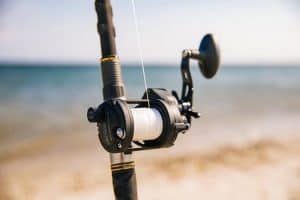
Surf fishing may be done with both baitcasting and spinning reels. It all depends on the fisherman and the sort of fishing he or she enjoys. The most effective Surf reels are built to endure the severe elements of the sea, which include saltwater, sun, and sand, to name a few.
Offshore Reels
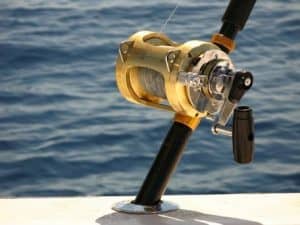
Baitcasting or spinning reels are both options for offshore reels. These tough, generally more costly reels are built to withstand the most extreme offshore conditions, which would destroy ordinary reels.
They’re not only designed to fight monster-sized fish, but they also have to withstand the saltwater splashes that come with the territory.
Trolling Reels
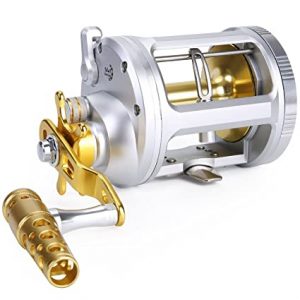
The conventional or trolling reel (also known as a casting reel) is most commonly used for heavy deep-sea/big game offshore fishing. Conventional reels are useful for trolling or bottom fishing for large game fish in the deep blue or merely a deep lake.
A dual-speed reel, which allows you to effortlessly transition from fighting enormous, reel-smoking brutes like tuna and marlin to power-cranking up big fish off the bottom with the flick of a lever, is another feature to look for in trolling/casting reels.
Fly Fishing Reels
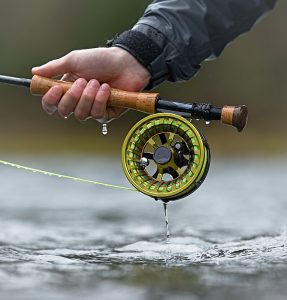
Fly fishing requires precision casting to get the line to your desired location, thus fly fishing reels provide some of the most precise casting available.
Fly fishing reels are simple, dependable, and long-lasting, with a focus on the latter. It’s not uncommon to find fly fishing reels that have been around for more than 40 to 50 years still in service.
Centrepin Reels
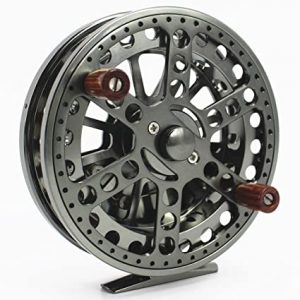
The centrepin or centrepin reel is a form of a fishing reel that spins freely on its “centrepin” or axle and goes back to the early nineteenth century. Long-distance casting is possible because of the reel’s wide diameter spool, which rests perpendicular to the fishing rod.
The centrepin reel is still popular among Australian and European saltwater and freshwater fishermen, as well as certain anglers who fish the various rivers around the Great Lakes on both sides of the border.
Also Read: Types of Fishing Lines
Which Type of Fishing Reel Should You Purchase?
- Beginner Level: The spin-casting fishing reel is the ideal choice if you are new to fishing. It’s the simplest reel to operate, and there’s very little risk of backlash or line tangling, so you won’t have to deal with these issues while you’re just starting.
- Intermediate Level: The spinning fishing reel is a great choice for intermediate fishermen. It extends your range and improves your accuracy. Though they are more difficult to learn than a spin-casting fishing reel, with a little practice, you should be able to master this type of reel in no time.
- Experienced Level: The baitcasting reel is the way to go for the most experienced anglers. It can handle heavier lines and gives you more power, making it ideal for fighting heavier faster-swimming fish.
It takes some time to become used to fishing with this sort of reel, and you’ll surely need some practice; nevertheless, once you’ve mastered it, you’ll notice a significant improvement in your baitcasting fishing abilities.